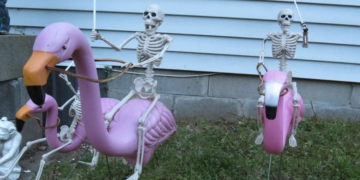What are the limits when it comes to robotics ? No, seriously, it’s an important question, because it seems like the dawn of robot overlords will soon be upon us .
One example of people using robots for good comes to us from Oregon State University, where students and researchers have developed a robot that can run fast — really fast. It’s so fast, in fact, that it set a Guinness World Record.
We’ve seen some pretty impressive stuff with robotics.

A lot of research in the robotics field concerns artificial intelligence — creating interfaces with a ‘brain’ that can learn and function similar to a human’s. This is known as deep learning , where an A.I. brain can learn from the data that’s fed into it.
We’ve also seen some physically impressive robots.

A.I. brains are one thing, but creating a robotic frame to go along with it — a “body” of sorts that can move freely based on its programming and machine learning — takes things to another level. Boston Dynamics is a leader in this field, creating robotic dog-things that are pure nightmare fuel.
The robotics experts at Oregon State University have been working on something.

OSU’s College of Engineering in Corvallis, Oregon, has developed a robot nicknamed “Cassie.” Cassie is decked out in the school’s colors of orange and black and has bipedal capabilities. This means that it has two legs, just like us.
Cassie was put to the test.

Starting from a standing position at the blocks at OSU’s Whyte Track and Field Center, Cassie ran the 100 meter sprint in just 24.73 seconds without falling. That’s pretty impressive for a robot, and Cassie did indeed make history.
How does it compare to a human?

Fortunately, humans can still beat robots when it comes to sprint speed. The top human competitors are more than twice as fast as Cassie, with Usain Bolt holding the current world record of 9.58 seconds.
24.73 is still pretty good for a robot.

Cassie had to be programmed to take on a fast gait. The Guinness Book of Records says it’s officially the fastest bipedal robot to run the 100 meter dash. The achievement follows an impressive 53-minute 5-kilometer run last year.
Cassie was made possible by a grant.

Defense Advanced Research Projects Agency, or DARPA, provided a 16-month, $1 million grant to Oregon State to develop the robot. A single battery charge is all it needs to run five kilometers or more.
It’s just the start.

“We have been building the understanding to achieve this world record over the past several years, running a 5K and also going up and down stairs,” said Oregon State graduate student Devin Crowley, who helped develop Cassie.
It’s the product of many simulations.

“This 100-meter result was achieved by a deep collaboration between mechanical hardware design and advanced artificial intelligence for the control of that hardware,” said professor Alan Fern.
“This may be the first bipedal robot to learn to run, but it won’t be the last,” added professor Jonathan Hurst.
You can see the record-breaking sprint right here.
This is the kind of thing that can’t really be captured in still photographs. Check out the record-setting robotic run and then let us know what you think of this story in the comments.



















































